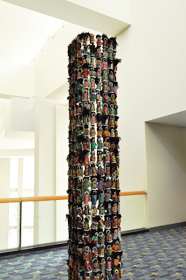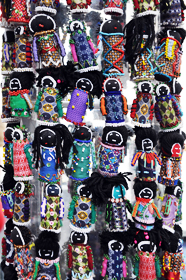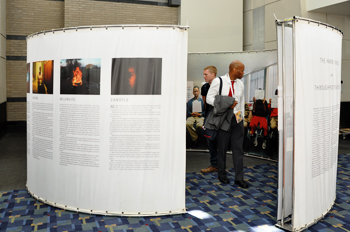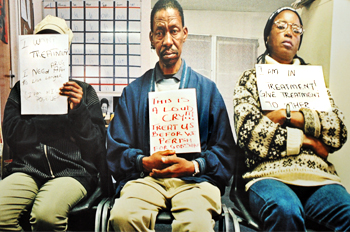
Let’s Move People
I woke up on my second day at the International AIDS Conference wanting to be moved. Not that the opening plenary speeches I attended the day before were not inspiring, but I was left wanting a more personal experience or connection. I know I’m not alone.
That day I found myself in front of a piece of art outside the main session room, a see-through column lined with small dolls. I leaned in to examine the artful beadwork on the dolls, very similar but intricately different. Orphan Tower contains 634 dolls made by local bead workers in a rural village in South Africa. Each doll represents one child living in the village whose parents died from AIDS. According to the placard, there are currently over 3.7 million AIDS orphans in South Africa alone. To represent all of them, there would need to be 5,835 of these towers. I’m left wondering who will care for these children, if they will also develop AIDS, and, if so, whether will they receive treatment. I’m also aware that these dolls could represent millions of children all over Africa, and all over the world.

 The piece is part of an exhibit that premiered last year, cleverly titled the A.R.T. Show. The works address issues dealing with antiretroviral therapy (ART), including who has access and who doesn’t.
The piece is part of an exhibit that premiered last year, cleverly titled the A.R.T. Show. The works address issues dealing with antiretroviral therapy (ART), including who has access and who doesn’t.
Another piece literally draws people in—to stand in front of a large curved photograph by George Mendel aptly titled The Harsh Divide. It shows HIV-positive people, some on treatment and some not, sitting in a circle holding stark messages like, “This is a loud cry!!! Treat us now before we perish.” 

The other side contains self-portraits by HIV-positive people on ART created during a Through Positive Eyes workshop in Johannesburg. The photographs range from representational to intimately documentary. The first one to bring tears to my eyes was by Annah, of a chubby baby boy’s photo displayed on a cell phone. Annah’s accompanying text explains she gave birth to this little boy at 19 and he died in her arms from AIDS at just 6 months old. This photograph in particular affects me, as I have a healthy daughter not much older than this and have had access to health care and qualified health workers that others have not.
Throughout the conference, presenters insist we have the scientific ability to end AIDS. There is ART and treatment to prevent mother-to-child transmission. Ensuring universal access to this treatment as well as HIV prevention services and counseling, however, requires an adequate amount of trained health professionals. Yet we know there is a global shortage of over 4.3 million doctors, nurses, and midwives and over one billion people do not have access to a qualified health worker to receive these services. Also throughout the week, I see person after person stop to take a photo of the Orphan Tower.
In her opening plenary speech, Secretary of State Hillary Clinton said that through PEPFAR, the Global Fund, and other initiatives, the amount of HIV-positive people around the world receiving treatment since 2009 has doubled, and with this progress we can look forward to an AIDS-free generation. Again, it will take health workers to make this goal a reality.
In the first plenary session today, Yogan Pillay, deputy director general for health in South Africa, shared positive statistics, including that there are now 1.7 million HIV-positive people in his country on treatment. He saluted South Africa’s health workers: without them, South Africa would not have been able to reach these targets.
As the conference closes, I wonder how people will put their personal experiences and what they learned into action. I am moved, especially by the personal stories I heard and read and the art I saw, to volunteer locally to help address HIV/AIDS in my own community. How can we similarly move health leaders—from government officials to health facility managers—and donors to care about the health worker shortage, and to take action to address it, so HIV/AIDS treatment and prevention services can be available to everyone?
On the CapacityPlus communications team, my colleagues and I already utilize photographs and multimedia to communicate messages about the health workforce shortage and CapacityPlus’s work to address it. We try to appeal to different types of learners and audiences and recently launched a video series featuring health workers sharing their challenges and what motivates them. In the final two years of our project, I hope we’ll find additional ways to draw people in to care about the health workforce shortage and to be moved to take action. If you have ideas for this, I invite you to share them by leaving a comment.
Related items:
Photos by Carol Bales.


